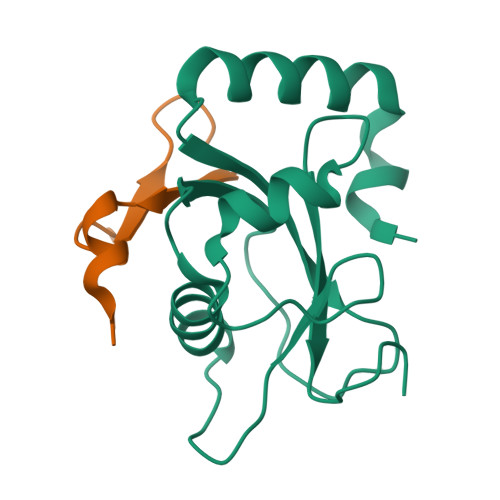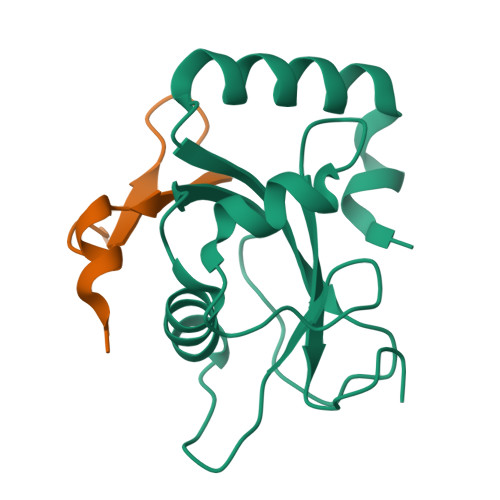Mechanistic insights into the interactions of TAX1BP1 with RB1CC1 and mammalian ATG8 family proteins.
Zhang, M., Wang, Y., Gong, X., Wang, Y., Zhang, Y., Tang, Y., Zhou, X., Liu, H., Huang, Y., Zhang, J., Pan, L.(2024) Proc Natl Acad Sci U S A 121: e2315550121-e2315550121
- PubMed: 38437556
- DOI: https://doi.org/10.1073/pnas.2315550121
- Primary Citation of Related Structures:
8W6A, 8W6B - PubMed Abstract:
TAX1BP1, a multifunctional autophagy adaptor, plays critical roles in different autophagy processes. As an autophagy receptor, TAX1BP1 can interact with RB1CC1, NAP1, and mammalian ATG8 family proteins to drive selective autophagy for relevant substrates. However, the mechanistic bases underpinning the specific interactions of TAX1BP1 with RB1CC1 and mammalian ATG8 family proteins remain elusive. Here, we find that there are two distinct binding sites between TAX1BP1 and RB1CC1. In addition to the previously reported TAX1BP1 SKICH (skeletal muscle and kidney enriched inositol phosphatase (SKIP) carboxyl homology)/RB1CC1 coiled-coil interaction, the first coiled-coil domain of TAX1BP1 can directly bind to the extreme C-terminal coiled-coil and Claw region of RB1CC1. We determine the crystal structure of the TAX1BP1 SKICH/RB1CC1 coiled-coil complex and unravel the detailed binding mechanism of TAX1BP1 SKICH with RB1CC1. Moreover, we demonstrate that RB1CC1 and NAP1 are competitive in binding to the TAX1BP1 SKICH domain, but the presence of NAP1's FIP200-interacting region (FIR) motif can stabilize the ternary TAX1BP1/NAP1/RB1CC1 complex formation. Finally, we elucidate the molecular mechanism governing the selective interactions of TAX1BP1 with ATG8 family members by solving the structure of GABARAP in complex with the non-canonical LIR (LC3-interacting region) motif of TAX1BP1, which unveils a unique binding mode between LIR and ATG8 family protein. Collectively, our findings provide mechanistic insights into the interactions of TAX1BP1 with RB1CC1 and mammalian ATG8 family proteins and are valuable for further understanding the working mode and function of TAX1BP1 in autophagy.
Organizational Affiliation:
State Key Laboratory of Chemical Biology, Shanghai Institute of Organic Chemistry, University of Chinese Academy of Sciences, Chinese Academy of Sciences, Shanghai 200032, China.




















